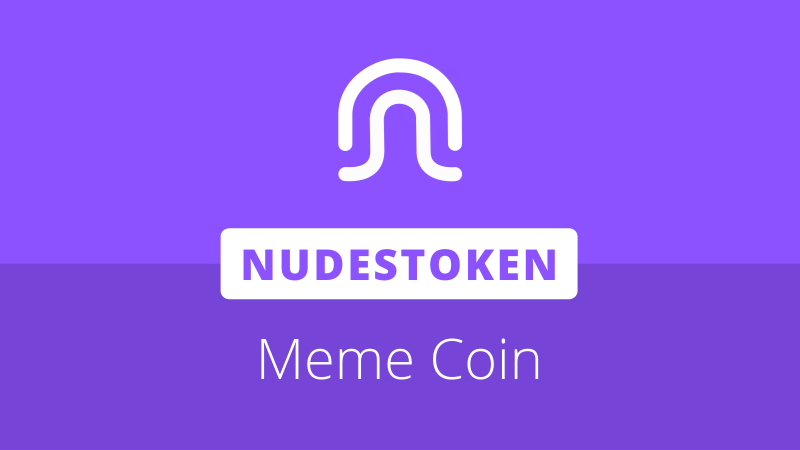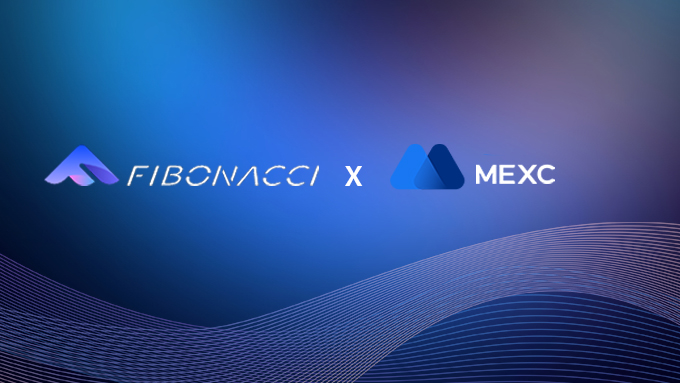
In the rapidly evolving blockchain landscape, fragmented liquidity and bridging vulnerabilities have become critical obstacles to seamless cross-chain interactions. PicWe emerges as a groundbreaking solution, offering the first truly bridgeless omni-chain liquidity infrastructure that connects isolated blockchain ecosystems.
This comprehensive guide explores PicWe’s revolutionary Chain Abstraction Transaction Model (CATM), its native governance token PIC, and how this innovative protocol is reshaping decentralized finance through AI-powered infrastructure and unified liquidity management. Whether you’re a DeFi enthusiast, cross-chain trader, or simply curious about the future of blockchain interoperability, this article provides everything you need to understand PicWe’s transformative approach to omni-chain asset management.
Key Takeaways
- PicWe is a revolutionary omni-chain liquidity protocol that eliminates traditional cross-chain bridges through its innovative Chain Abstraction Transaction Model (CATM), enabling direct asset trading between blockchains
- PIC serves as the governance token empowering holders to vote on protocol revenue allocation, chain development priorities, transaction fee structures, and treasury asset composition
- The platform addresses critical DeFi challenges including blockchain fragmentation, bridge vulnerabilities (80% of cross-chain attacks in 2023), and high transaction costs through its bridgeless infrastructure
- Dynamic Liquidity Matrix (DLM) consolidates fragmented liquidity across multiple chains into a unified pool, dramatically enhancing capital efficiency compared to traditional LP models
- AI-powered infrastructure enables autonomous blockchain operations, allowing AI agents to earn tokens while helping non-crypto users access DeFi benefits through specialized roles
- WEUSD stablecoin provides omni-chain settlement with 1:1 USDT backing, supporting native minting across multiple blockchains without centralized bridge risks
- Three-phase roadmap progresses from prebuilt AI strategies to permissionless AI marketplaces, culminating in autonomous AI agents that achieve self-evolution
- PIC tokenomics details are pending official announcement, with the token focused primarily on governance utility rather than traditional supply metrics
Table of Contents
What is PicWe (PIC Crypto)?
PicWe is a revolutionary decentralized, trustless, omni-chain liquidity infrastructure that enables seamless, cost-efficient trading across multiple blockchains without traditional bridges. Built as the ultimate DeFi infrastructure on Movement blockchain, PicWe addresses the critical challenge of blockchain fragmentation by creating unified “High Seas” that connect isolated cryptocurrency ecosystems.
The platform operates through its innovative Chain Abstraction Transaction Model (CATM), which allows users to trade assets directly between blockchains using smart contracts rather than vulnerable cross-chain bridges. PicWe’s ecosystem encompasses comprehensive DeFi services including native swapping, liquidity provision, a decentralized stablecoin (WEUSD), and AI-powered infrastructure that enables non-blockchain users to perform on-chain operations through AI agents.
PIC is the native governance token that empowers holders to actively shape the ecosystem’s future through on-chain, decentralized governance. By holding PIC, users gain voting rights on crucial protocol decisions including revenue allocation, chain priority support, transaction fee structures, and treasury asset composition.
PicWe vs PIC Token: Key Differences Explained
| Aspect | PicWe | PIC Token |
|---|---|---|
| Definition | Complete omni-chain liquidity infrastructure and protocol | Native governance token of the PicWe ecosystem |
| Function | Provides bridgeless cross-chain trading, DeFi services, and AI infrastructure | Enables governance voting and protocol decision-making |
| Scope | Entire ecosystem including CATM, WEUSD, RWA platform, and AI agents | Specific utility token for community governance |
| Services | Swap, liquidity provision, cross-chain transactions, stablecoin minting | Voting on revenue allocation, fee structures, chain priorities |
| Technology | CATM model, Dynamic Liquidity Matrix (DLM), smart contracts | ERC-20 compatible governance token with voting mechanisms |
| User Access | Available to all users for trading and DeFi operations | Requires token holding for governance participation |
What Problems Does PicWe Want to Solve?
1. Blockchain Fragmentation and Liquidity Silos
The blockchain ecosystem suffers from severe fragmentation, where assets remain isolated within their native chains, creating inefficient liquidity distribution. Traditional cross-chain solutions force users to navigate complex bridge systems, resulting in poor capital efficiency and limited accessibility to mid-to-long-tail assets like meme coins on smaller chains.
2. Bridge Vulnerabilities and Security Risks
Cross-chain bridges represent the most vulnerable infrastructure in DeFi, with 80% of cross-chain attacks targeting bridges in 2023. These centralized points of failure store user assets during transfers, creating honeypots for attackers. The traditional lock-and-mint model introduces unnecessary security risks that compromise user funds.
3. High Transaction Costs and Complexity
Current cross-chain operations require multiple steps: bridging assets first, then swapping on the destination chain. This two-step process doubles transaction fees, increases gas costs, and creates friction for users seeking efficient cross-chain interactions.
4. Limited AI Agent Integration
AI agents require permissionless, decentralized protocols to operate effectively, yet existing infrastructure lacks seamless blockchain execution capabilities. This limitation prevents AI agents from earning tokens autonomously or helping non-crypto users access blockchain benefits.

The Story Behind PicWe and PIC Token
PicWe emerged from a vision to unify fragmented Web3 networks, inspired by Bitcoin’s ideals of decentralization, transparency, and fair value distribution. The project draws inspiration from historical explorers, with development phases named after pioneering navigators like Columbus, Magellan, and Drake, symbolizing the journey to connect isolated blockchain “continents.”
The platform achieved significant recognition by winning the DeFi 1st Prize at Movement’s Battle of Olympus Hackathon, validating its innovative approach to liquidity and decentralization. Within weeks of testnet launch, PicWe demonstrated remarkable adoption with 838,000 wallet addresses, 112,000 interactions, and $14.6 million in transaction volume.
PicWe’s development follows a structured exploration roadmap, progressing from initial Movement-to-EVM swaps (Dias Phase) through comprehensive multi-chain interoperability (Magellan Phase) to ultimate omni-chain asset liquidity (Drake Phase), where assets from any chain can flow seamlessly between ecosystems.

Key Features of PicWe (PIC Crypto)
1. Chain Abstraction Transaction Model (CATM)
CATM revolutionizes cross-chain interactions by enabling direct asset purchases between blockchains without bridges. Users place orders on their original chain while agents on target chains provide necessary tokens, with all transactions secured through smart contracts. This bridgeless approach eliminates traditional vulnerabilities while maintaining complete asset security.
2. Dynamic Liquidity Matrix (DLM)
DLM consolidates fragmented liquidity across multiple chains into a unified cross-chain pool, dramatically enhancing capital efficiency. Unlike traditional LP pools that lock funds for specific pairs, DLM provides on-demand liquidity wherever transactions occur, enabling providers to earn rewards from all available trading pairs simultaneously.
3. Native Decentralized Stablecoin (WEUSD)
WEUSD serves as PicWe’s omni-chain settlement currency, maintaining 1:1 USDT backing while supporting native minting and redeeming across multiple blockchains. This eliminates centralized bridge risks while providing stable, borderless liquidity for cross-chain operations and real-world asset investments.
4. AI-Powered Infrastructure
PicWe empowers AI agents with real blockchain execution capabilities, allowing them to earn tokens autonomously while helping non-crypto users access DeFi benefits. The platform supports specialized AI roles including strategists, executors, verifiers, and seekers, creating a comprehensive AI-driven trading ecosystem.

PicWe Real-World Use Cases
1. Cross-Chain DeFi Operations
PicWe enables seamless asset trading across Movement, EVM, Solana, and BTC ecosystems without traditional bridge dependencies. Users can directly purchase any target chain asset using their original chain holdings, eliminating complex multi-step processes while maintaining security through smart contract execution.
2. AI Agent Blockchain Integration
The platform allows AI agents to perform autonomous on-chain operations, earning tokens while helping users manage digital assets. Non-blockchain users can “hire” AI agents for DeFi tasks, dramatically lowering entry barriers while enabling agents to reinvest earnings in computational resources and self-improvement.
3. Real-World Asset Investment
Through the integrated RWA platform, WEUSD holders can participate in tokenized real-world assets including treasury bonds, real estate revenue, and physical ownership assets. The platform features risk-grading systems and investor profiles to match users with appropriate investment opportunities.
4. Omni-Chain Payments and Settlement
WEUSD functions as a universal payment currency across supported blockchains, enabling instant cross-chain purchases and withdrawals. Users experience mobile payment-like simplicity while maintaining the security and decentralization of blockchain technology.

PIC Tokenomics and Supply
PIC serves as the governance token of the PicWe ecosystem. However, detailed tokenomics information including total supply, distribution allocation, and vesting schedules has not yet been officially announced by the project team.
The token’s primary focus is on governance utility rather than traditional tokenomics metrics. Specific details regarding token supply, distribution percentages, and release schedules are expected to be revealed as the project progresses toward its official launch.
For the most current tokenomics information, users should monitor official PicWe announcements and documentation.
Functions of PIC Crypto Token
1. Governance and Protocol Control
PIC holders exercise direct control over PicWe’s development direction through on-chain voting mechanisms. This includes determining quarterly revenue allocation for token buybacks and burns, ensuring community-driven economic policy that aligns with holder interests rather than centralized decision-making.
2. Chain Development Prioritization
Token holders vote on which blockchain networks receive priority development and marketing resources, enabling the community to guide PicWe’s expansion strategy based on market opportunities and user demand rather than team preferences.
3. Fee Structure Determination
The community sets cross-chain transaction fees for each supported blockchain quarterly, balancing network sustainability with user accessibility. This decentralized approach ensures fee structures reflect actual usage patterns and community consensus.
4. Treasury Asset Management
PIC holders decide which native blockchain assets join WEUSD’s collateral backing, directly influencing the stablecoin’s composition and risk profile. This governance function allows the community to adapt WEUSD’s backing to changing market conditions and preferences.

The Future of PicWe and PIC Coin
PicWe’s roadmap envisions progressive evolution through three distinct phases, ultimately achieving autonomous AI-driven blockchain interactions. Phase 1 focuses on prebuilt AI strategies, enabling non-blockchain users to perform on-chain operations through collaborative AI projects. This phase targets mass adoption by leveraging the larger AI user base compared to active blockchain participants.
Phase 2 introduces a permissionless AI Agent Marketplace where anyone can create specialized agents for different Web3 sectors. Users will “vote with their feet,” naturally selecting the most efficient and profitable agents, leading to autonomous AI communities and specialized solutions for various blockchain challenges.
Phase 3 represents the culmination with autonomous improvement capabilities, where AI agents achieve self-evolution by purchasing computational resources, data, and distributed training using earned tokens. Advanced agents will hire multiple basic agents, creating hierarchical AI ecosystems that operate without human intervention, fundamentally reshaping human productivity and economic relationships.

PIC Crypto Competitors Analysis
PicWe faces competition from traditional cross-chain bridge protocols, DEX aggregators, and emerging chain abstraction solutions. However, PicWe distinguishes itself through fundamental architectural advantages that address core industry vulnerabilities.
Traditional bridge competitors like Multichain, Stargate, and LayerZero suffer from inherent security risks, with bridges representing 80% of cross-chain attack targets in 2023. These solutions require locking assets in centralized pools, creating honeypots for attackers. PicWe eliminates this risk entirely through its bridgeless CATM model, where assets never leave their native chains.
DEX aggregators like 1inch and Paraswap optimize single-chain trading but cannot address cross-chain liquidity fragmentation. PicWe’s Dynamic Liquidity Matrix provides superior capital efficiency by enabling liquidity providers to earn from all trading pairs simultaneously across multiple chains, rather than being locked into specific pair commitments.
Emerging chain abstraction protocols often rely on intent-based systems that still require underlying bridge infrastructure. PicWe’s direct smart contract coordination eliminates these dependencies while providing true chain abstraction through seamless user experiences that feel like single-chain operations.
PicWe’s AI integration represents a unique advantage, as no competitors currently offer comprehensive AI agent blockchain execution capabilities. This positions PicWe to capture the massive AI user market while traditional competitors remain limited to existing crypto users.
Conclusion
PicWe represents a paradigm shift in blockchain interoperability, offering the first truly bridgeless solution to cross-chain liquidity challenges. Through its innovative CATM model, Dynamic Liquidity Matrix, and AI-powered infrastructure, PicWe eliminates traditional vulnerabilities while creating unprecedented opportunities for seamless omni-chain asset management.
The PIC governance token empowers community-driven development, ensuring the protocol evolves according to user needs rather than centralized decisions. With its comprehensive roadmap spanning AI agent marketplaces to autonomous improvement systems, PicWe is positioned to become the foundational infrastructure connecting all blockchain ecosystems.
As the crypto industry moves toward increased chain proliferation and AI integration, PicWe’s unified approach addresses fundamental scalability and security challenges that traditional solutions cannot solve. For investors, developers, and users seeking exposure to the future of decentralized finance, PicWe offers a compelling combination of innovation, security, and growth potential.
Join MEXC and Get up to $10,000 Bonus!
Sign Up


